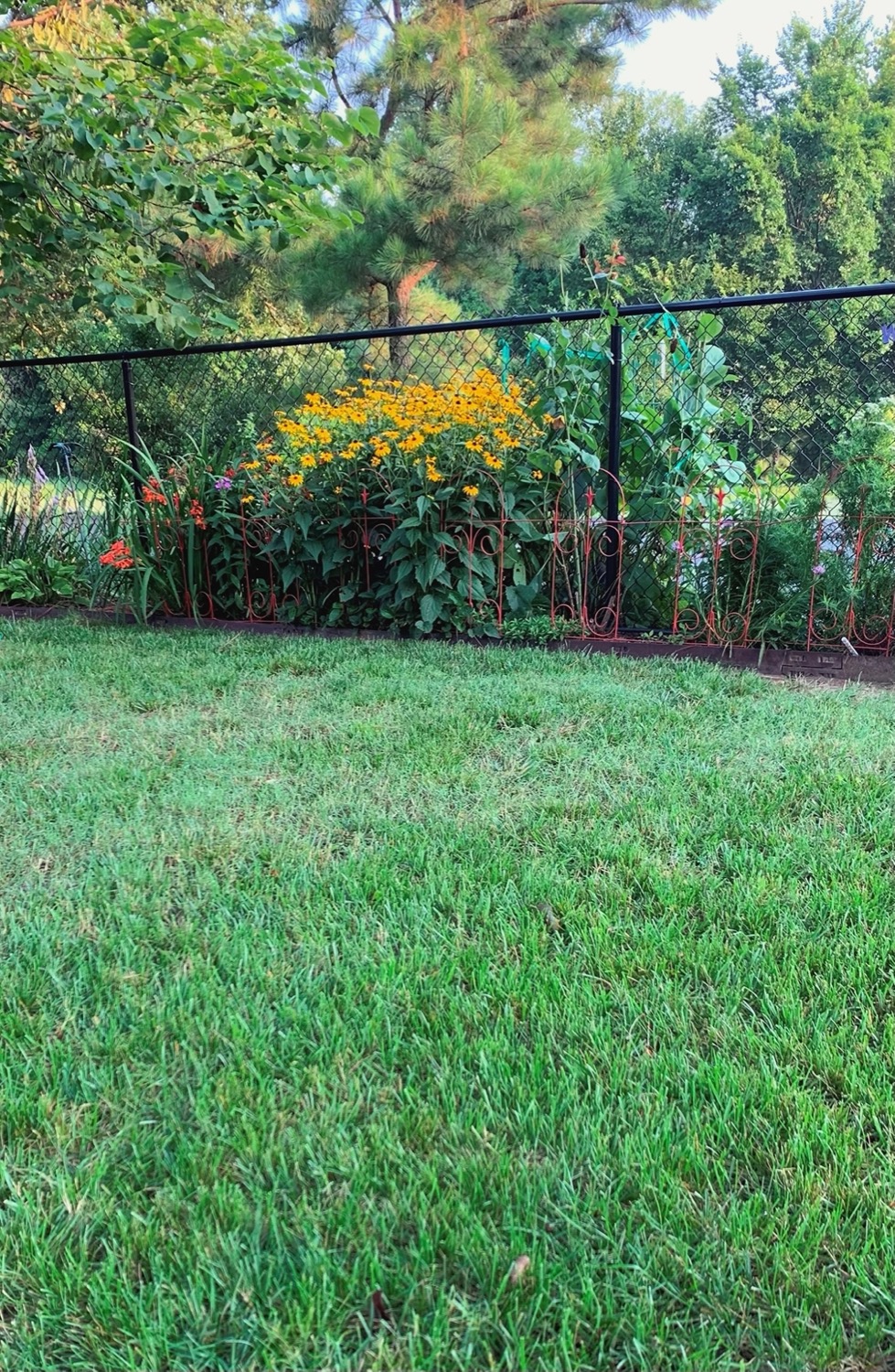Kathy Berryhill
Creek County Master Gardener
By far the largest plant that we take care of is our lawn. Even if all we do is a weekly mowing, far more time is spent on this plant than any other single plant in our landscape. A well-manicured lawn is very pleasing to the eye and it’s a great setting for outdoor activity. By gaining a little “lawn knowledge” we can greatly reduce the cost and time we spend on our lawns.
Oklahomans experience a wide range of temperatures and levels of moisture. Bermuda grass is by far the most commonly used grass as it can tolerate these conditions. Bermuda handles full sun and tolerates heat and drought to the point of springing back to life after completely turning brown in the summer or winter. While some Bermuda turf did get a little “bit” by this winter’s harsh temperatures, our lawns survived for the most part and are thriving with the ample moisture we have had recently.

Yards that have a high amount of shade are most often planted with a type of fescue. Fescue is a cool season grass and doesn’t tolerate the heat or direct sun well. Most fescue varieties need around 70% shade to survive. Additionally, fescue has a high requirement for consistent moisture so in times of drought they must receive adequate water to survive. As water becomes more expensive, the cost of keeping a beautiful fescue lawn has escalated.
A relative newcomer to our choices of grass is a product called Titan Rx. Now in its 4th generation of seed production, this grass is very well suited to Oklahoma lawns. Titan Rx was developed to thrive in full sun areas that experience times of low moisture and high ground temperatures. This grass has deep roots and forms a dense growth canopy. Its roots can grow as deep as 6 feet deep which gives the plant more access to deep ground moisture. It can also tolerate deep shade and performs better than the high maintenance fescues.
Due to its thick ground cover, Titan Rx requires much less use of chemical weed management products. As this product has been developed and improved, its environmental benefits have increased. Titan Rx contains a naturally occurring fungus that wards off insects and improves its stress tolerance. As the Titan Rx seed germinates in about 7 days as a fine bladed grass. But as the plant grows, the blade becomes thicker and the coverage becomes denser. These properties make it a great choice for high traffic areas. In my use of Titan Rx, I find that areas of my lawn that would not support Bermuda are quickly filled in with Titan Rx and grow thick enough to make it a great choice whether under trees, in the sun and/or in areas of unusually high traffic. What once was a muddy or dry patch of soil is now a beautiful carpet of a characteristic deep green! The Titan Rx has an extensive rhizome (underground shoots) and will quickly spread to bare spots.
Any seed will struggle to germinate in highly compacted hard soil so tilling the soil is necessary. Adding proper nutrients to the soil at planting time is recommended. Our local Extension Office offers soil testing for a low cost. Directions for obtaining a soil sample can be found at okstate.edu. Search for Fact Sheet PSS-2207. Once the soil is amended, scatter seed according to package directions. For proper germination, the seed can not be allowed to dry out so consistent watering is essential. For this reason, lawn seeding is most successful during the cooler weather (around 55 degrees) of spring and fall. Once the seed has started growing, refrain from applying herbicides for several weeks.
Summer lawns benefit from about an inch of water per week. One deep weekly watering is more beneficial than several shallow sprinklings. To measure the amount of water you are applying, place an empty can on your lawn and observe the amount of water that is collected. Water in the early morning rather than the middle of the day to prevent scorching and discourage mold or fungus.
As the temperatures continue to climb, set the mower blade at 3”-4”, never cutting more than 1/3 of the blade height off at a time.
Hopefully, these tips will help you keep a beautiful looking lawn that is an enjoyment throughout the summer.










